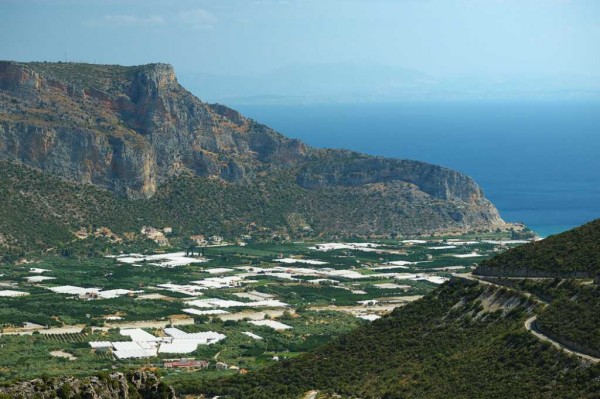
Strategy to improve the management and conservation of the region
Vision (30 years from today)
“A sustainable landscape, where the society is enjoying quality of life and well being by living in harmony with the natural, cultural and historical environment. Biodiversity, culture and traditions are conserved in the best possible way. Parnonas act as a focal (reference) point for a sustainable future in the Greece , Mediterranean region and worldwide”.
Objectives (5 years from today)
- Develop a manageable small scale tourism scheme (as a tool for conservation).
- Support small scale agriculture and modify the current intensive agricultural practices.
- Create a sustainable livestock farming system and abandon the current use of communal land.
- Achieve land use planning and administration flexibility for the region
- Reach levels of satisfactory cultural, built and natural heritage conservation.
- Organize a better scheme for waste management in the region.
In order to meet the objectives, participants prepared a series of activities
Group A: Public engagement in the Parnon region
Group A presented a strategy for engaging conservation, nature protection, social and economic development practice. Their goal was to use the visitor economy to assist and support rural development and conservation. The activities suggested include the use of educational agrotourism courses organized in the farms of interested owners, where the participants will have the opportunity to gain experience in a natural way of living and producing, while contributing at the daily work in a farm. More educational activities in the field can be organized as well. The anticipated results will strengthen nature and biodiversity conservation, while contributing to the local economy and social development.
Group B: Network for the monuments of Parnon
Group B suggested a strategy for the conservation of cultural, built and natural heritage. Much like Group A, they utilize small scale tourism and recreation as a tool for meeting conservation objectives. They suggest the creation of a path network for walking and hiking, connecting monuments and monumental sites of the region. These monuments can be natural elements (trees, rocks, caves, springs), historical sites (castles, towers, settlements), combined with cultural values (tradition, crafts, songs, folks elements, farms, tsakonian dialect). The elements should be chosen carefully in order to lead to a full package of information and experience for the visitor. Maps, GIS information, information centers, stands, web applications, organized tours with songs and historical explanations can be used to promote the network. The visitors can be locals, students, visitors, tourists. The project can be carried out by local authorities, scientists and volunteers and funded by state or private institutions. Owners of the land, users and municipality have to agree and maintain the monuments, in order to be part of the network. This strategy will strengthen local participation, will promote the sustainable development of the local economy and contribute to the maintenance of the cultural, historic and natural heritage.

